Our last stop in Peru was in its second largest city – Arequipa.
We traveled there from Puno by bus, not a very pleasant experience for me. We had bought VIP Seats, since they were not a lot more expensive than the regular seats on the tourist bus. Unfortunately, the seats were at the lower level of the double-decker bus, with very limited view outside the bus, and none towards the front. I can get car sick if I cannot see outside. What was worse, most of the drive was at night, going up and down mountain passes, and there was not much to see anyway! The road turned a lot too. So I just traveled with my eyes closed most of the trip.
We arrived at Arequipa very late and went to bed immediately after a quick dinner – we did not see much of the city on the first evening but discovered that we had found a really nice hotel, not far from the Plaza de Armas, or the main square of the city.
The following day, we woke up to a gorgeous day with sunshine and not too hot. Arequipa is much lower than where we had been so far, only 2400 m above sea level, but it is surrounded by 5000+m mountains covered in snow.
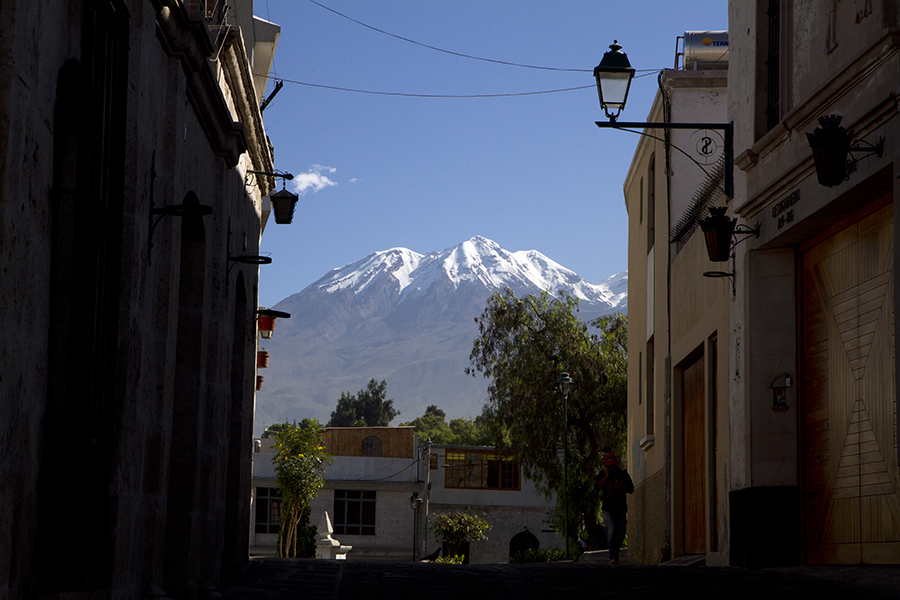
We were amazed by the very intricate decoration of the front door of this church compared to the rest of the wall. We had not seen that before in Peru for such a simple neighborhood church. This is the Church de la Compania – right next to the Plaza de Armas, the main square of the city.
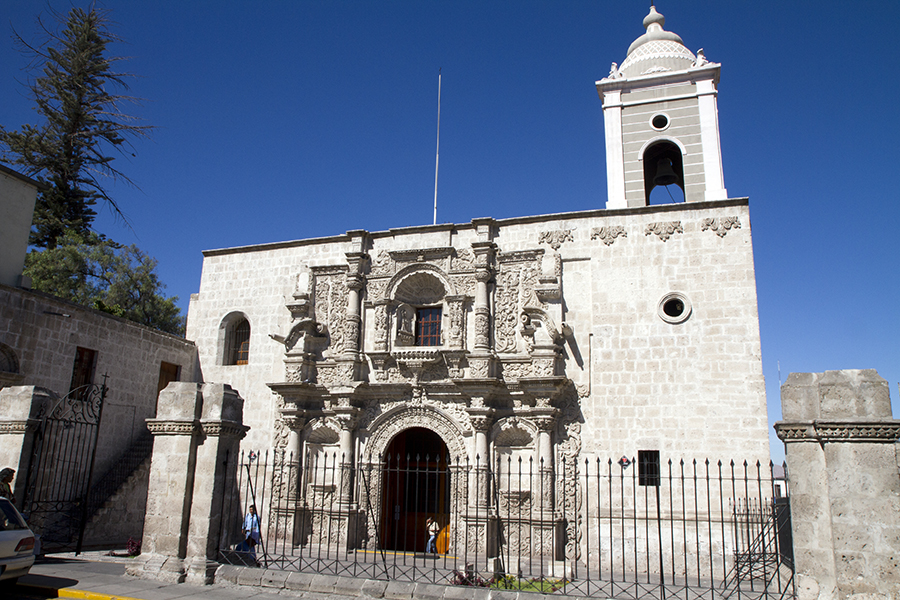
We visited the Convent of Santa Catalina. This is a very large convent, or a small city within the city. There are streets with ‘private’ apartments for people who wanted to get away from the every day life, but did not necessarily want to fully embrace the life of a nun.
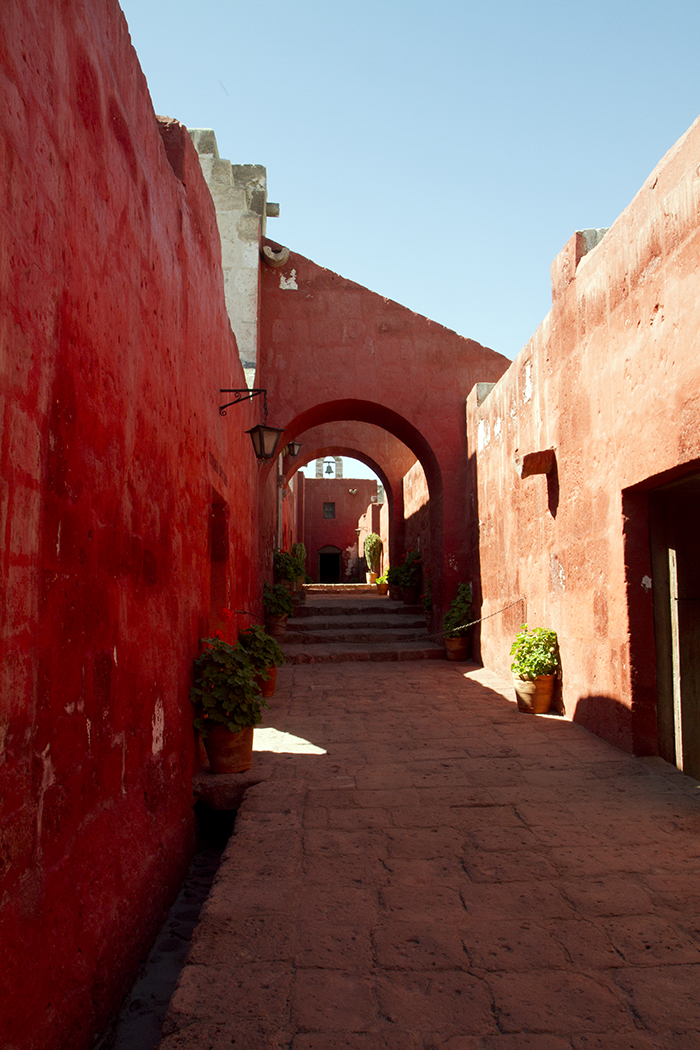
The central square of the Monasterio is very colorful!
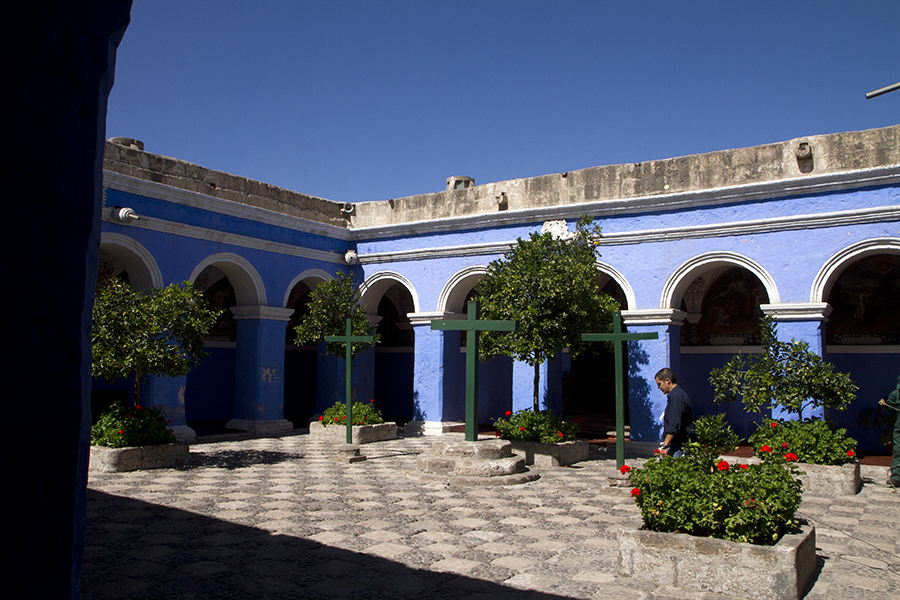
We had an excellent guide who walked us though the convent for several hours. We walked down several small alleys like this one.
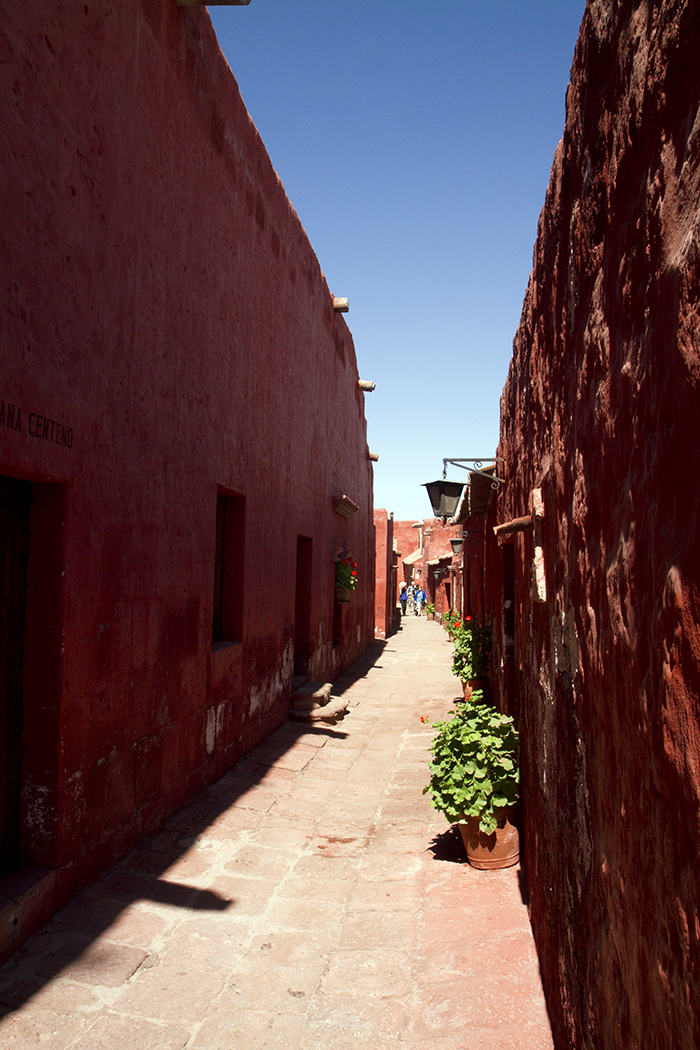
This was the bakery
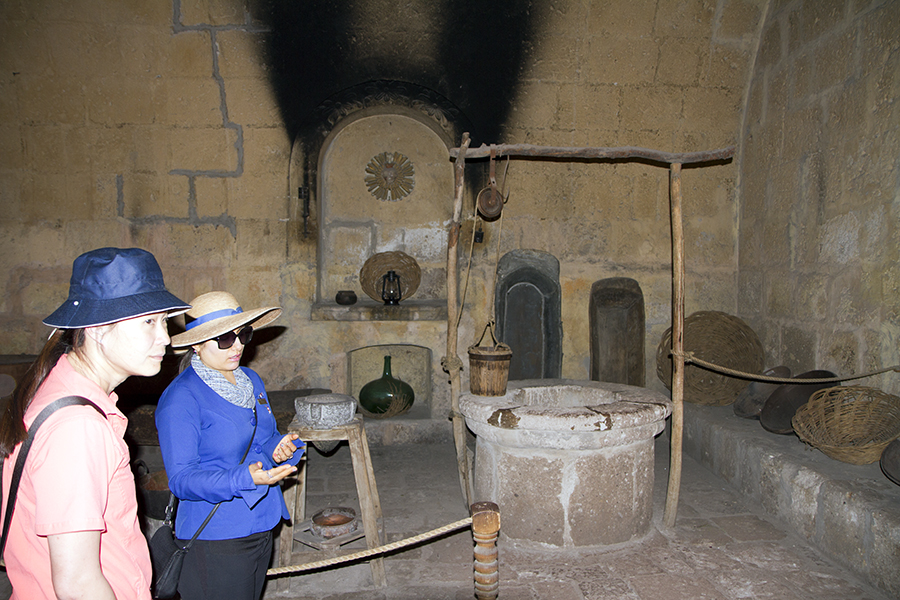
Another square in the Monasterio
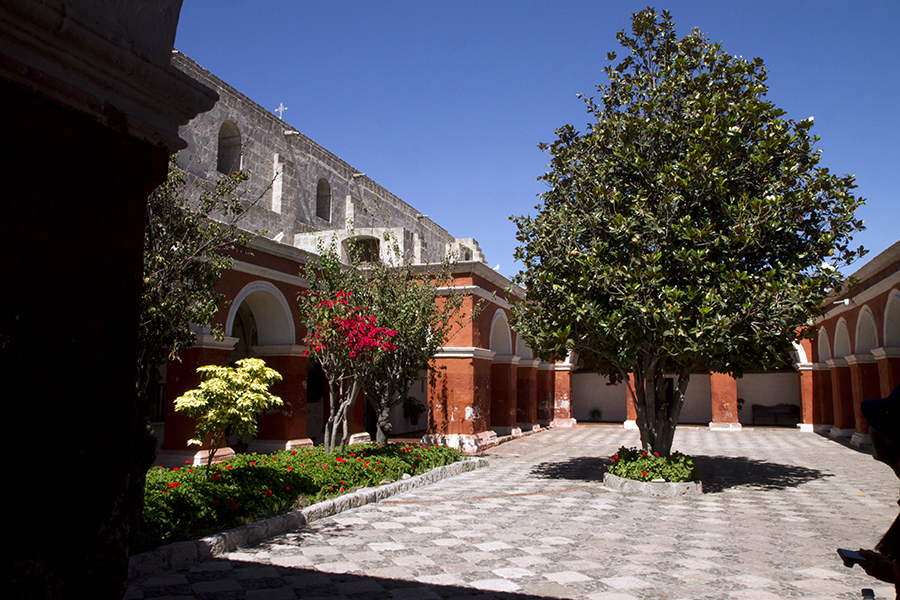
One of the mountains near Arequipa is a volcano called Misti, because it is often covered by clouds. We were lucky to see it in its full glory. It is 5822 m tall and many people climb it from Arequipa – only 3400 m to go!
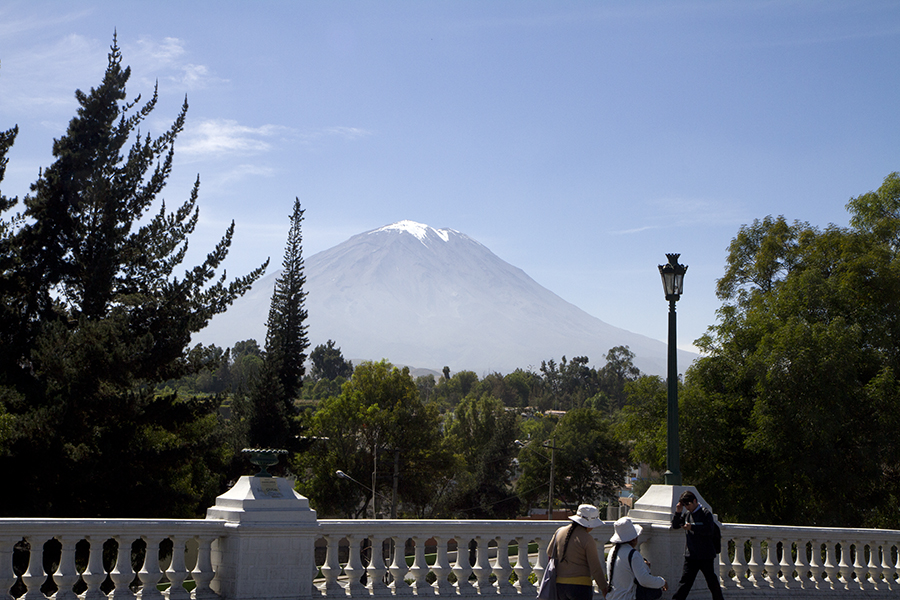
North-West of the center of Arequipa there is a neighborhood called Yanahuara which is the home of artists and is somewhat bohemian. We went exploring one day and this is a gate leading into the neighborhood.
However, before we got there, we had to contend with protesters who were demonstrating against the construction of a mine near Arequipa. The protests lasted the whole time that we were in Arequipa but were generally not violent and we were left alone.
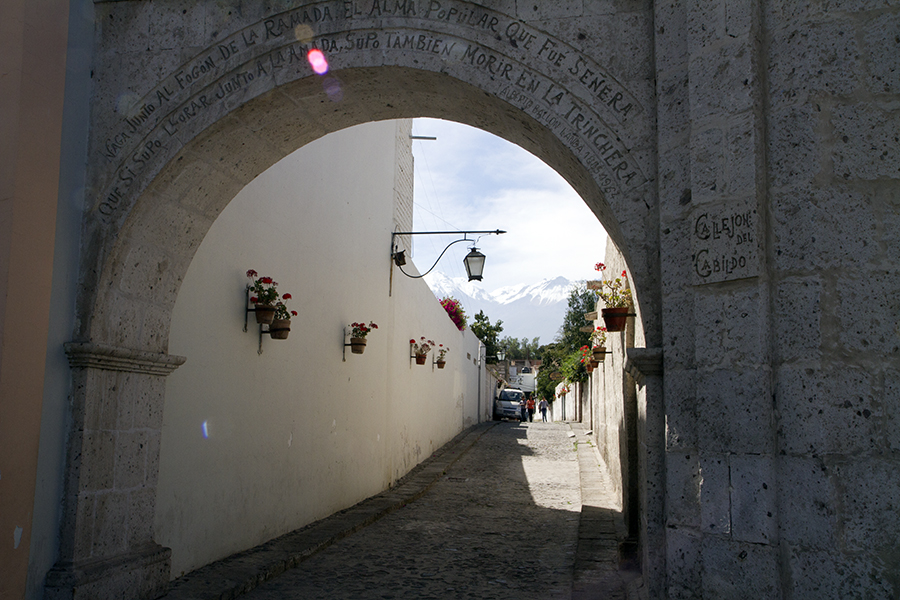
View from the main square in Yanuahara. The mountains in the back are Picchu-Picchu and Pichu-Pichu (I could not make that up!), both well above 5500 m.
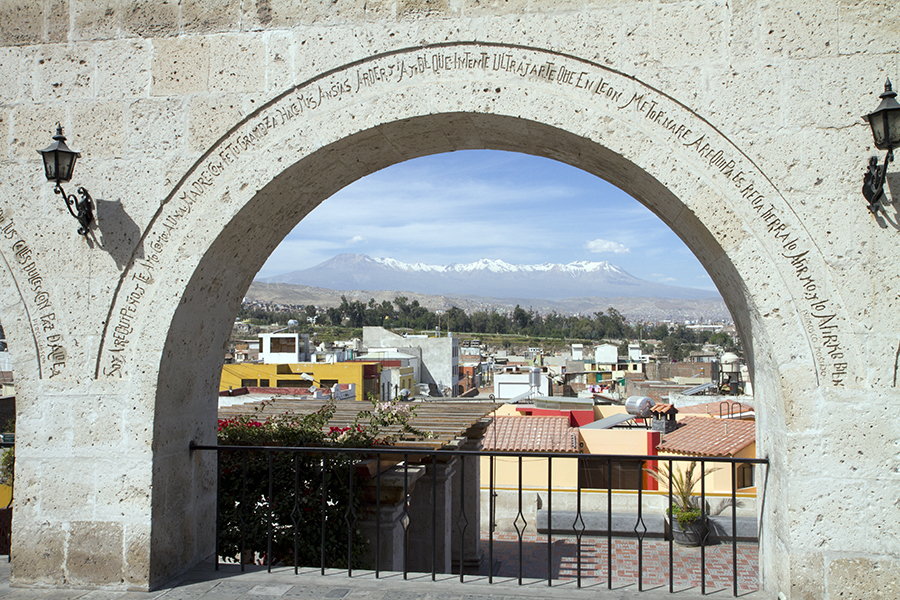
More views of Misti from Yanuahara.
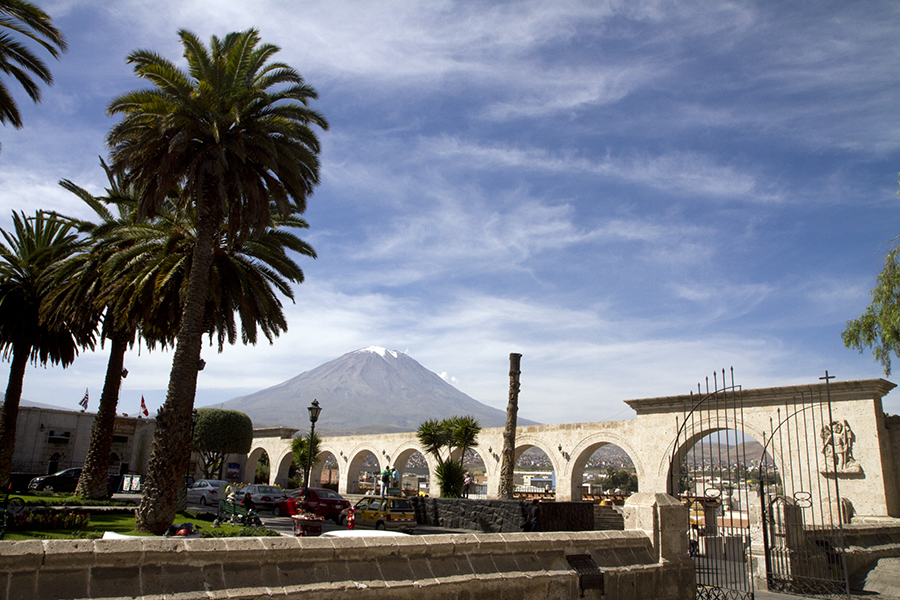
The main church in Yanuahara. San Juan Bautista. Here is again the very decorated area around the main door and very plain walls on either side. It appears to be typical of the churches in Arequipa.

After lunch, as we were heading back towards the center of Arequipa, we were stopped by a senior military officer who warned us, in Spanish, that we needed to be very careful going back to the center of town as there had been clashes between the protesters and the police. Once again, the protesters left us alone and we did get back to the hotel without troubles. Later that day we heard what sounded like numerous gunshots; in the evening we saw empty shells of rubber bullets and while we were having a beer not too far from the Plaza de Armas, a tear gas canister landed on the street in front of us; luckily, we were able to quickly retreat indoors.
The little inconveniences that you sometimes run into in foreign countries…
On the last day in Arequipa, we decided to explore the mine where the typical white stone used in construction comes from. There is a guided tour, but it took us several travel agents before we found one that knew what we were talking about.
We ended up in a canyon that has been dug down over the year. Today, the white stone is considered a cheap material of construction and the demand has decreased significantly. The main area where the stone is still extracted, strictly by hand, is separated into family concessions that are passed from one generation to the next. However, there are fewer and fewer people who still want to do this job.
In order to attract tourism, they have carved a copy of a local church in the white rock.
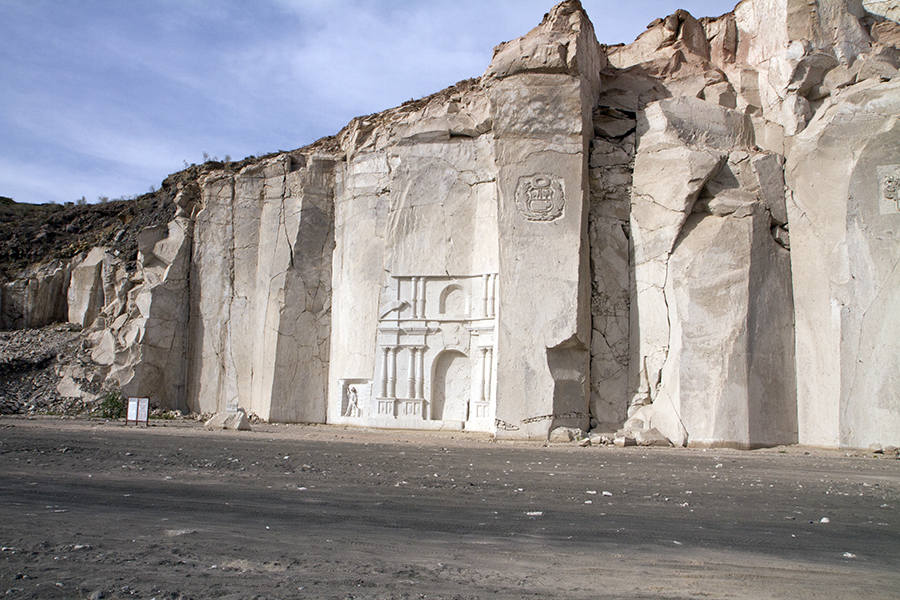
This is what a concession looks like. All work is done by hand, without any power tools. You start by carving large blocks from the rock face – notice the lack of any protective harness against a fall.
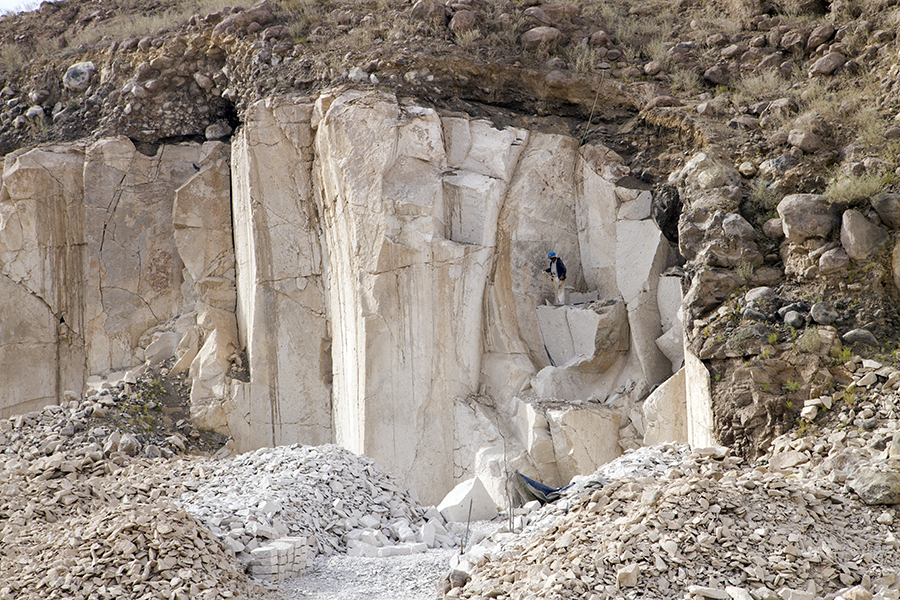
And this is the finished product. Each block is sold for what amounts to less than 5$ and the dimensions are standard.
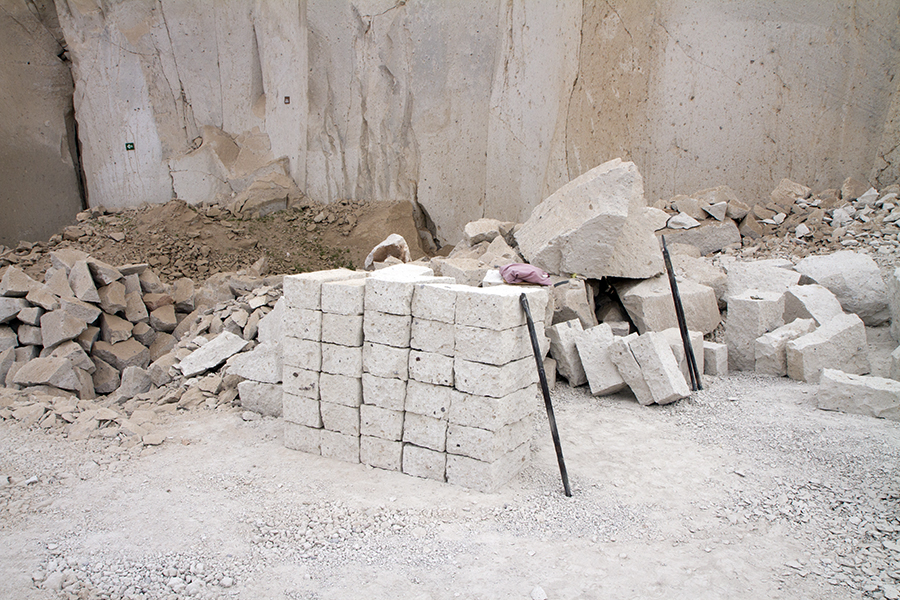
We saw a demonstration of how a block is made by this gentleman who has been doing this for over 50 years! He started with this large block.
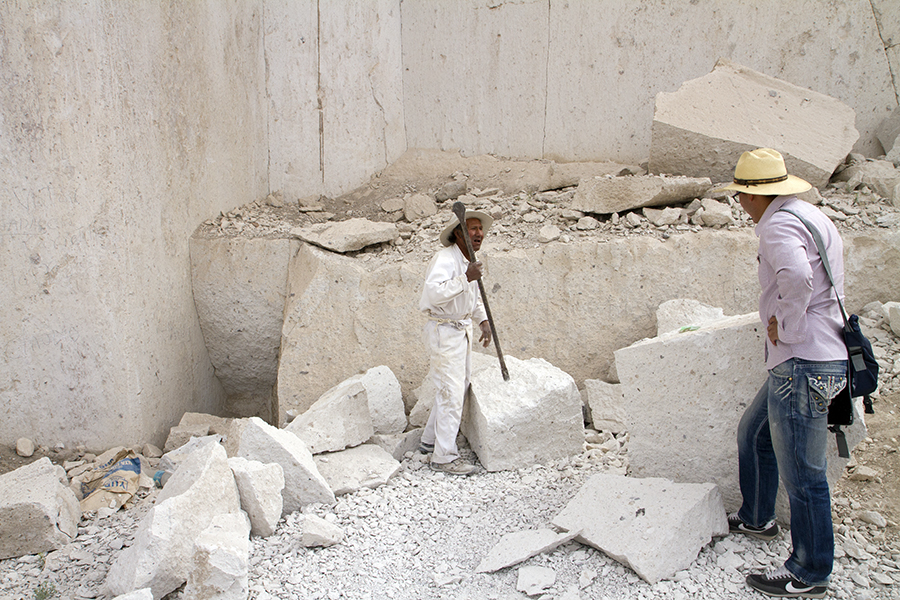
He splits the block by making small hole, than introducing wooden dowels in the hole, plastic from drink bottles to make everything tight, then just a touch of water to make the wood swell and split the block.
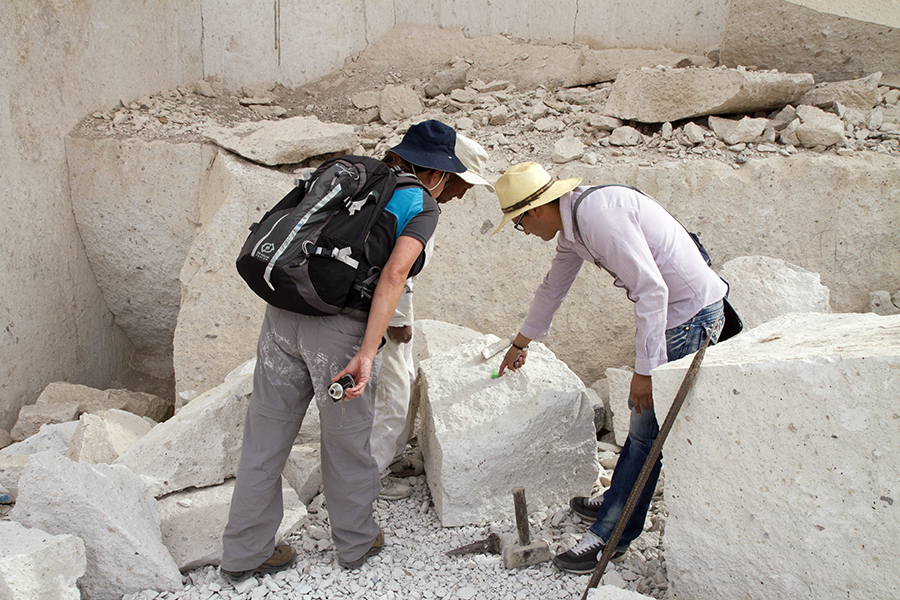
After the split, all you need to do is slowly shave all the parts that exceed the standard brick size.
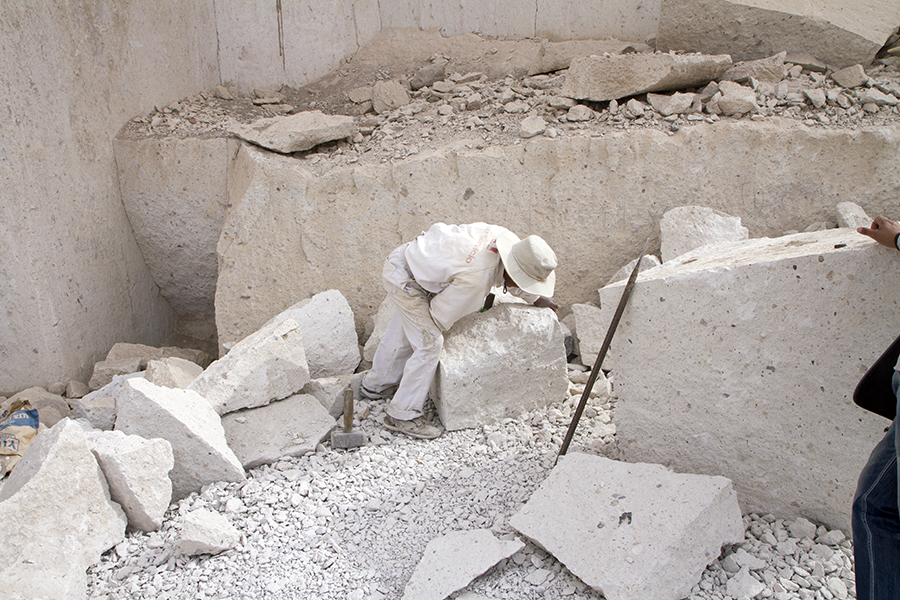
It is painstaking work.
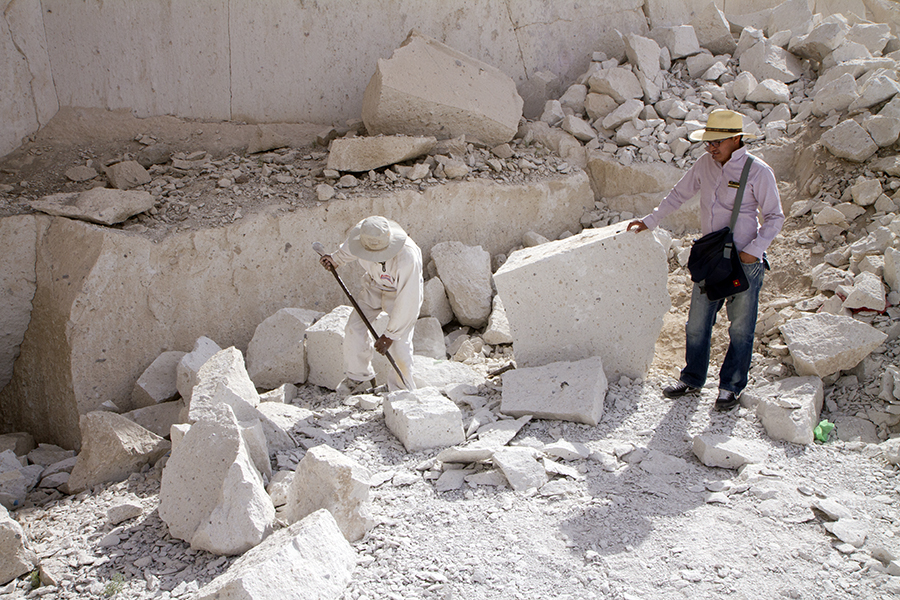
All by hand
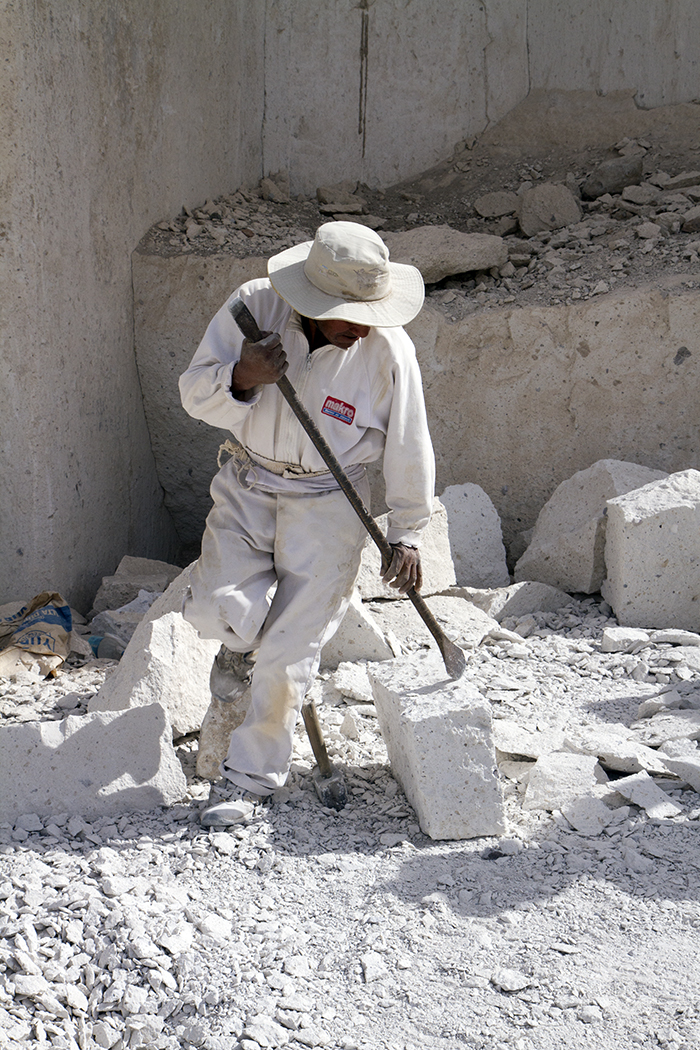
After a little less than 1/2 hour, he had a brick – he can make 10-15 bricks per day, 7 days per week.
A little further, we visited an old abandoned mine, now a canyon. The rock is no longer white as it has aged in the sun.
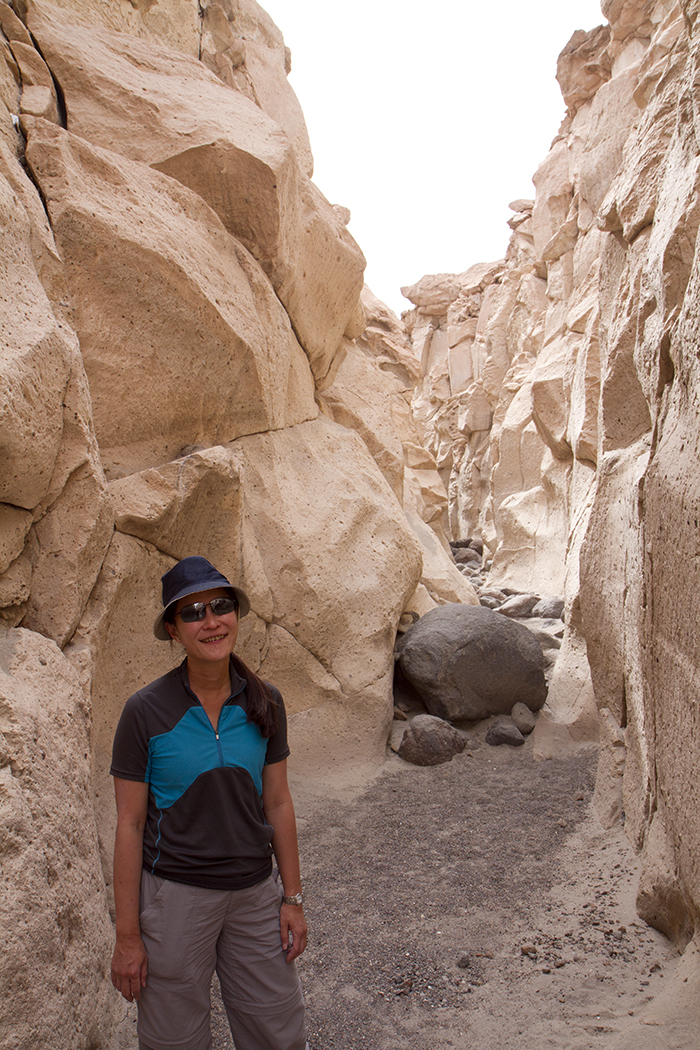
There have been people here in the past who decorated the sides – sorry I know it is very hard to see on the photo, but it looks good in reality.
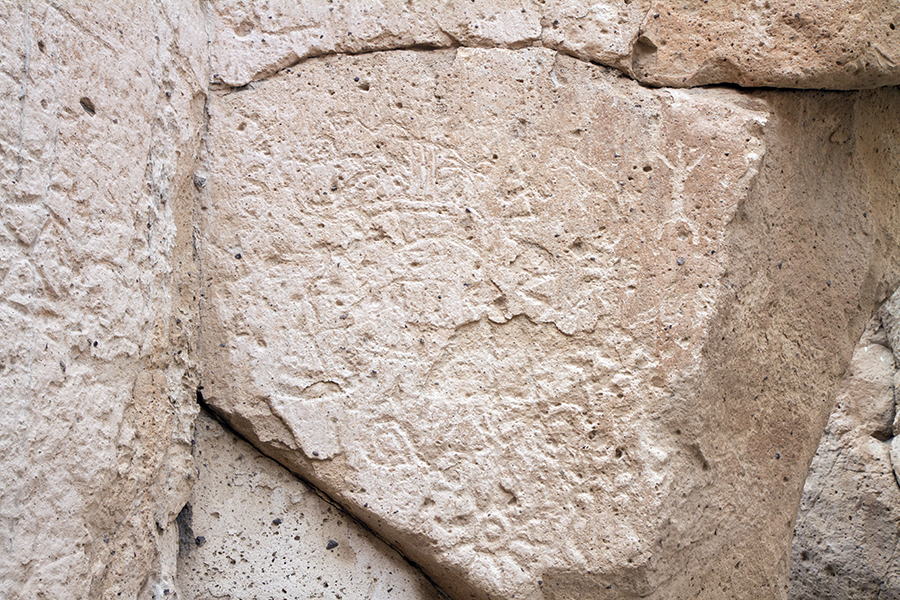
Here is a snake figure.
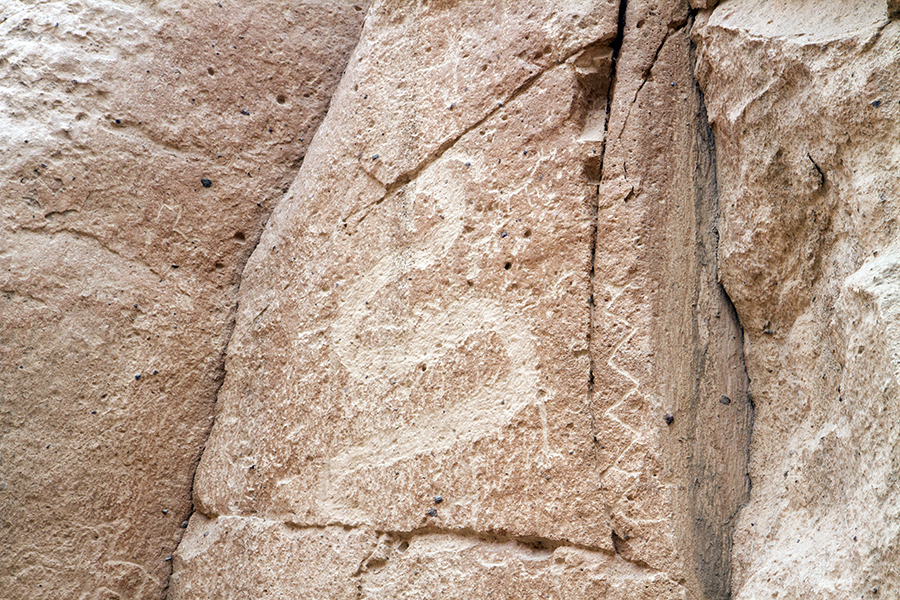
Back in Arequipa, we visited a local market. These are always a good gauge of the local population and what they are interested in buying. Vegetables and fruits are clearly a major part of the local diet.
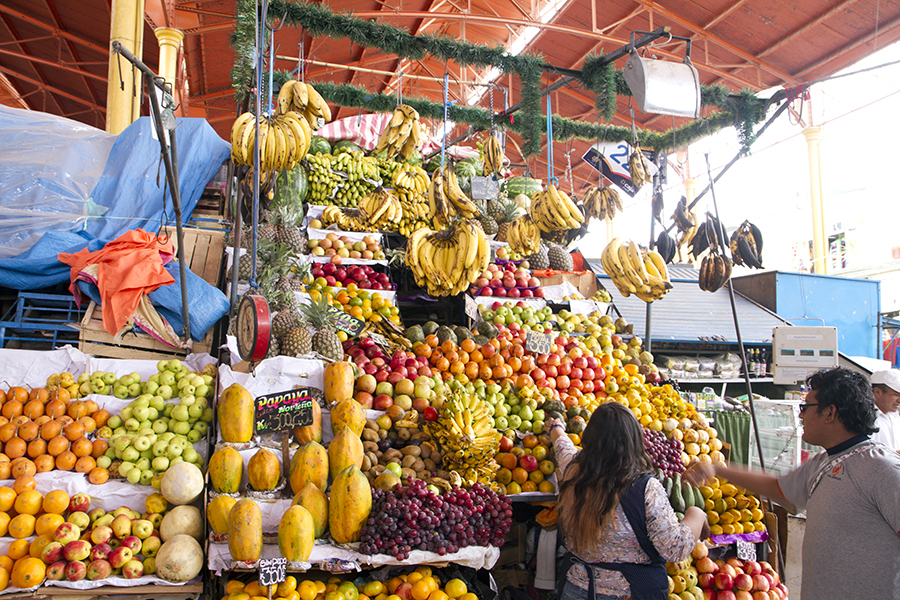
This was not a place where tourists typically go!
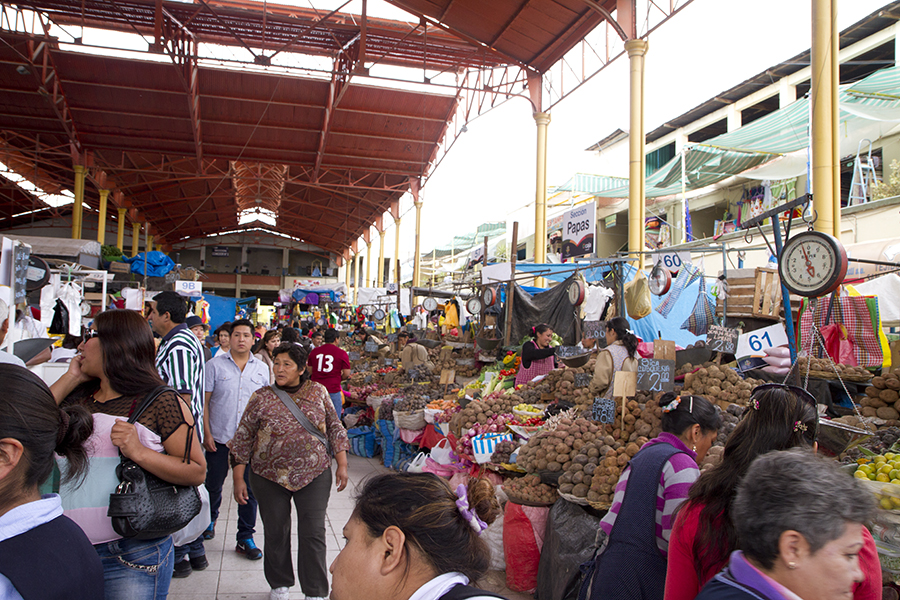
On our last day in Arequipa, we visited the Cathedral on the Plaza de Armas. Quite nice inside.

Very intricate decoration in the main altar

From the roof, there is a stunning view of the Plaza de Armas.
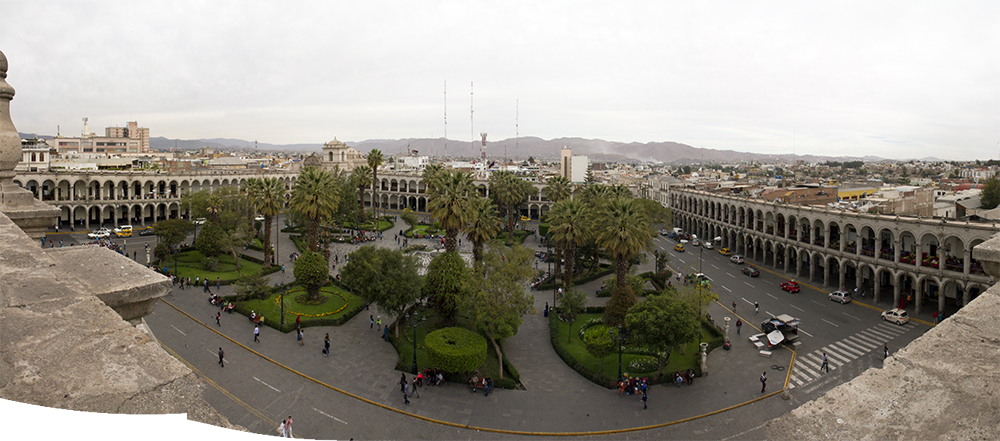
The next day, we took an early flight from Arequipa to Lima, then on to Bogota, London and finally Brussels.
It was quite an adventure!
(471 Page Views)
